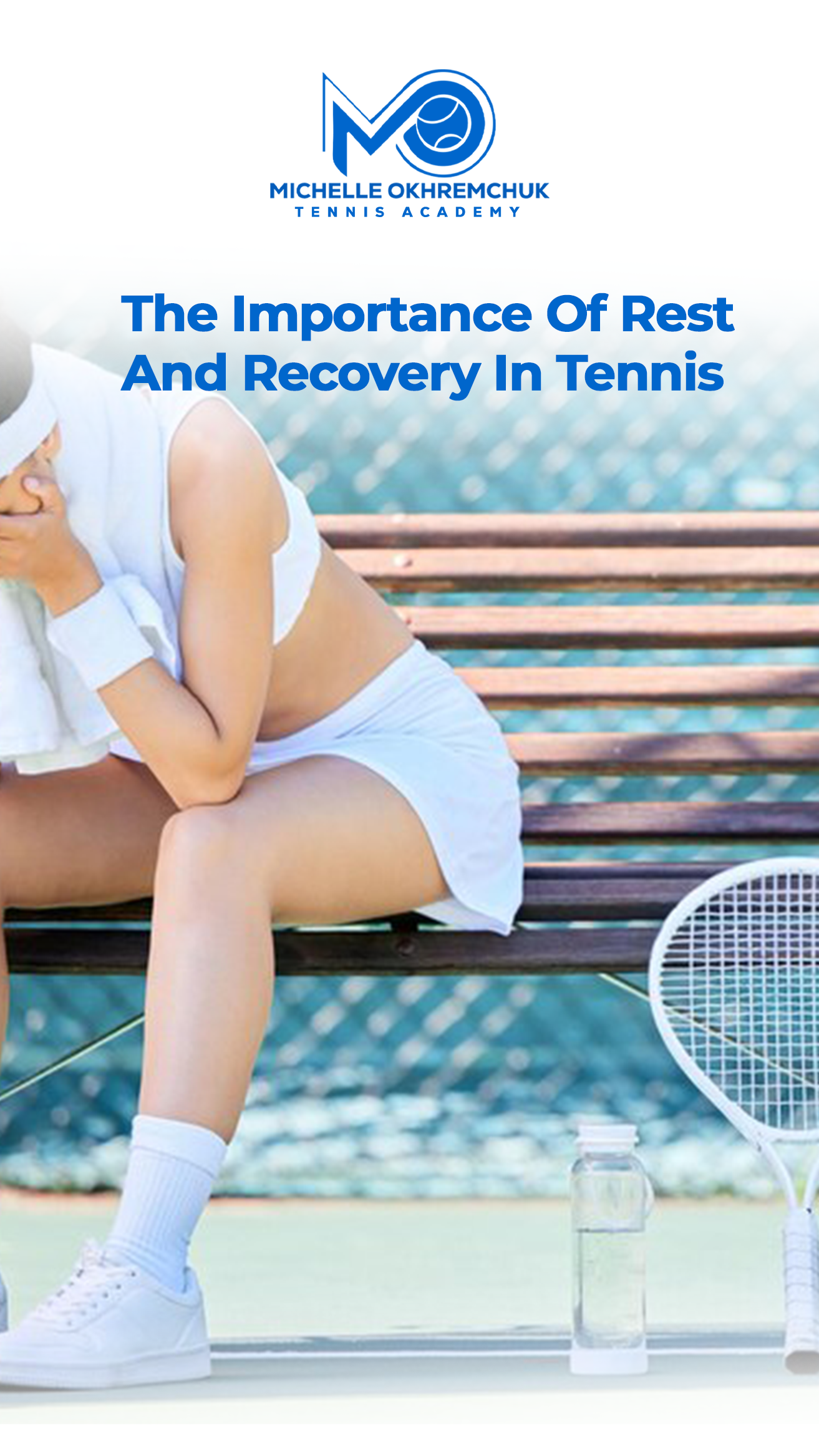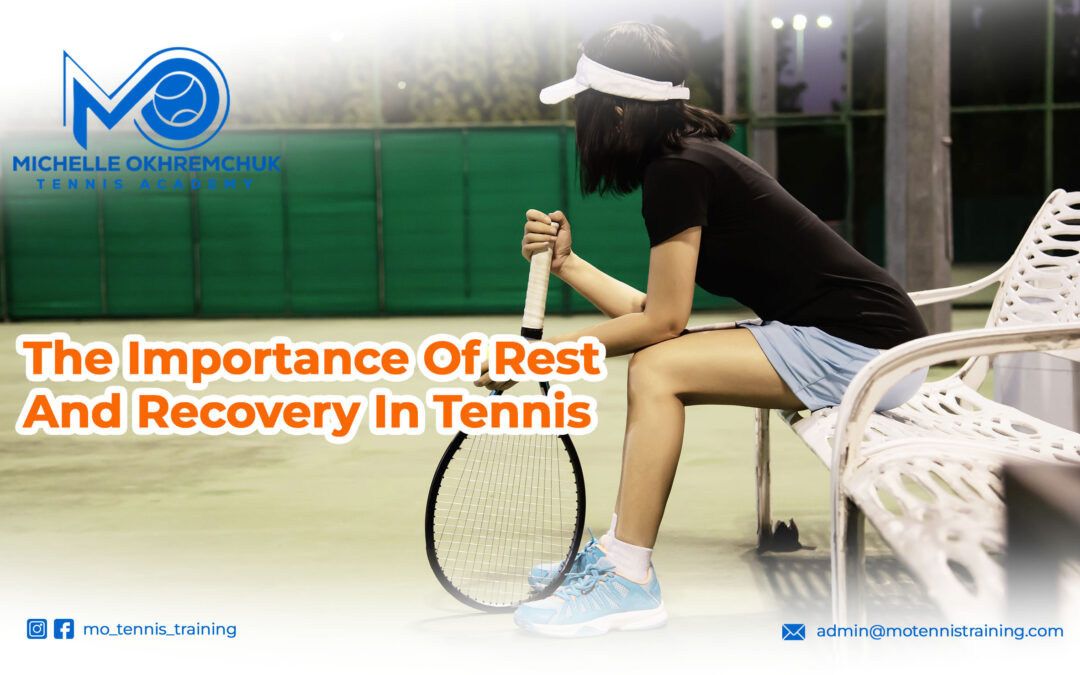Tennis, often known as the “sport of a lifetime,” is a thrilling and physically demanding game that calls for skill, strategy, and endurance.
While we frequently celebrate the intense rallies and powerful serves, what happens behind the scenes in terms of recovery is just as vital for success on the court.
We’ll discuss the importance of recovery in tennis and why it should be a fundamental part of every player’s game plan.
The Physical Demands of Tennis
Tennis is a sport that places substantial demands on its athletes. It involves explosive movements, such as sprinting to the net, quick lateral shifts, and formidable serves.
These actions place significant strain on the muscles, joints, and cardiovascular system. Players may find themselves on the court for extended periods, not only battling their opponents but also contending with various environmental factors.
These physical demands can exact a toll on the body, resulting in fatigue and the risk of injuries.
The Mental Challenge
In addition to the physical aspects, tennis is a game that heavily relies on mental prowess. Each point, game, and set presents a unique puzzle to decipher. Players constantly assess their opponents, adapt their strategies, and execute their game plans.
There’s no room for mental relaxation during the game, except for the brief intervals between points. The mental challenge is substantial and can consume a significant amount of mental energy.
Research indicates that sustained mental exertion without adequate breaks can impair decision-making capabilities.
Significance of Recovery
Recovery in tennis encompasses an array of strategies and practices that enable players to rejuvenate their bodies and minds after intensive training sessions and matches.
Here’s why it is so indispensable:
- Injury Prevention:
Tennis is renowned for its potential to cause injuries, particularly overuse injuries like tennis elbow or stress fractures. Proper recovery, including rest, stretching, and massage, is pivotal in averting these injuries.
- Muscle Repair and Growth:
Tennis entails repetitive and strenuous muscle contractions. Sufficient recovery time allows muscles to repair and grow stronger, enhancing performance and reducing the risk of muscle imbalances.
- Mental Refreshment:
Tennis is as much a mental game as a physical one. Recovery affords players the chance to clear their minds, alleviate stress, and regain focus, resulting in improved decision-making on the court.
- Sustained Energy Levels:
Tennis matches can be grueling, often lasting for hours under the scorching sun. Recovery strategies such as adequate hydration and nutrition help maintain energy levels throughout a match.
Effective Recovery Strategies
Now that we comprehend the importance of recovery in tennis, let’s delve into some effective strategies that players can incorporate into their routines:
- Rest:
Ample sleep is of paramount importance. During sleep, the body repairs and regenerates tissues, making it indispensable for performance and injury prevention. Quality sleep significantly enhances cognitive function, aids in muscle recovery, and uplifts one’s mood – all pivotal for achieving peak performance in tennis.
- Nutrition:
Proper fueling is crucial. A well-balanced diet rich in carbohydrates, proteins, and healthy fats ensures that the body has the energy and nutrients it requires to perform at its peak.
- Hydration:
Staying well-hydrated is essential to prevent cramps and maintain focus. Consume plenty of water and consider electrolyte-replenishing drinks for intense matches.
- Stretching and Mobility Work:
Include stretching and mobility exercises in your routine to enhance flexibility and prevent muscle imbalances.
- Massage and Foam Rolling:
These techniques aid in alleviating muscle soreness and tightness, thereby enhancing recovery.
- Ice Baths and Contrast Therapy:
Alternating between hot and cold treatments can reduce inflammation and promote blood circulation, facilitating recovery.
- Mental Recovery:
Engage in relaxation techniques like meditation or visualization to calm the mind and enhance mental resilience.
- Active Recovery:
Rest doesn’t necessarily mean complete inactivity. In fact, spending the entire day on the couch can be counterproductive. Incorporating active rest days, where you engage in light physical activities unrelated to tennis, can be a game-changing strategy.
This may involve activities like a leisurely swim, a peaceful nature walk, or even yoga. These activities help prevent muscle stiffness, enhance blood circulation, and promote mental relaxation.
- Listen to Your Body:
Arguably the most critical aspect of the rest equation is recognizing when your body needs a break. Athletes, driven by passion and determination, often push themselves to the limit.
However, discerning the difference between pushing one’s boundaries and risking harm is imperative.
Paying attention to your body’s signals, identifying the onset of fatigue, and heeding these messages are paramount.
More on Cold Plunge/Ice Bath Recovery
Cold plunge or ice bath therapy is a favored recovery technique among elite athletes, including tennis players.
This practice involves immersing the body in ice-cold water for a brief period, typically around 10-15 minutes, immediately following strenuous training sessions or matches.
While the idea of submerging oneself in frigid water may seem daunting, the benefits it offers make it a valuable addition to a tennis player’s recovery toolkit:
- Reduced Inflammation:
Cold water immersion constricts blood vessels, which can help reduce inflammation and swelling in muscles and joints. This is especially advantageous after rigorous activity as it expedites the recovery process.
- Pain Relief:
The numbing effect of cold water can provide instant pain relief, making it easier for players to address any minor aches or soreness.
- Improved Circulation:
Alternating between cold water and warm-up exercises in a contrast bath can stimulate circulation, flushing out metabolic waste products and enhancing nutrient delivery to fatigued muscles.
- Faster Recovery:
Cold immersion can expedite the removal of lactic acid from muscles, potentially reducing muscle stiffness and soreness, a boon during tournaments with consecutive matches.
- Mental Freshness:
The shock of cold water can also offer a mental boost, helping players feel more awake and alert after a demanding match or practice session.
When integrating cold plunge or ice bath therapy into your tennis recovery regimen, it’s imperative to adhere to some best practices:
- Timing:
Employ ice baths immediately after strenuous physical activity when the body is still warm, as the benefits are most pronounced at this juncture.
- Duration:
Keep the duration relatively short, typically within the range of 10-15 minutes. Prolonged exposure to cold water can induce excessive shivering and discomfort.
- Hydration:
Ensure you stay well-hydrated before, during, and after the ice bath, as cold water immersion can cause a drop in body temperature and potentially increase dehydration.
- Gradual Adaptation:
If you’re new to cold baths, commence with shorter sessions and gradually extend the duration as your body acclimates to the cold.
Incorporating cold plunge or ice baths into your tennis recovery routine can be a potent means of enhancing overall recovery, reducing the risk of injury, and maintaining peak performance on the court.
While it may not be the most comfortable experience, the benefits it offers far outweigh the fleeting chill. Remember, recovery is as vital as training in the realm of tennis, and cold plunge therapy can be a game-changer in your pursuit of excellence.
Conclusion
In tennis, recovery isn’t a luxury; it’s important. It plays a pivotal role in injury prevention, sustaining peak performance, and ensuring that players can continue relishing the sport they adore for years to come.
So, the next time you step onto the court, bear in mind that recovery is just as vital as the power of your serve.
Integrate these recovery strategies into your tennis routine, and you’ll be better equipped to conquer the challenges of the game while staying injury-free and mentally sharp.


